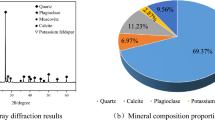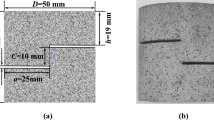Abstract
Failure of pressure vessels and piping due to high temperature applications occurs due to the formation of fatigue cracks caused by cyclic load. It is well known that, the consequences of collapses of pipes causing enormous disruption of daily life. Thus there is a need to design and manufacture the pipes with precision and care. The major cause of crack nucleation in pipes is due to corrosion and internal fluid pressure. The crack-tip stresses are determined using stress intensity factor (SIF). In the present work an attempt has been made to determine the SIF for multiple cracks in a circular pipe subjected to internal fluid pressure. Two surface cracks of same size were introduced at the inner wall of the tube. The crack depth ratio (a/t) ranging between 0.1 and 0.5 and crack aspect ratio (a/c) of 0.6 and 1.0 was considered. Internal fluid pressure of 100 MPa was applied at the inner surface of the pipe and the corresponding SIF was measured. SIF values were calculated with consideration of mode-II and mode-III fracture in order to predict the exact SIF. As available SIF solutions of cracked pipes are limited to mode-I fracture, present work presents the influence of additional influence of mode-II and mode-III fracture. It is observed that, as crack depth ratio increases, SIF also increases considerably for semi-circular cracks. Higher SIF values were observed at the crack surface region [S/S 0 = ±1] compared to crack middle [S/S 0 = 0] region. A crossover in SIF was noted at a crack depth ratio of 0.3. At higher crack depths, SIF values decrease at the crack surface region due to additional influence of mode-II and mode-III fracture. In contrast to semi-circular cracks, SIF values are higher at the crack surface region for semi-elliptic cracks irrespective of the crack depths.








Similar content being viewed by others
References
X.B. Lin, R.A. Smith, Fatigue growth prediction of internal surface cracks in pressure vessels. J. Press. Vessel Technol. Trans. ASME 120, 17–23 (1998)
J.C. Newman, I.S. Raju, Stress-intensity factors for internal surface cracks in cylindrical pressure-vessels. J. Press. Vessel Technol. Trans. ASME 102, 342–346 (1980)
X.J. Zheng, G. Glinka, R. Dubey, Calculation of stress intensity factors for semi-elliptical cracks in a thick-wall cylinder. Int. J. Press. Vessel Pip. 62, 249–258 (1995)
X. Wang, S.B. Lambert, Stress-intensity factors and weight functions for longitudinal semi-elliptical surface crack in thin pipes. Int. J. Press. Vessel Pip. 65, 75–87 (1996)
X. Niu, Some requirements on the reference loading with large stress gradient for the calculation of the weight function using the Petroski-Achenbach method. Eng. Fract. Mech. 36, 167–172 (1990)
A. Kiciak, G. Glinka, D.J. Burns, Calculation of stress intensity factors and crack opening displacements for cracks subjected to complex stress fields. ASME J. Press. Vessel Technol. 125, 260–266 (2003)
T. Nishioka, S.N. Atluri, Analysis of surface flaw in pressure vessels by a new 3-dimensional alternating method. J. Press. Vessel Technol. 104, 299–307 (1982)
C.L. Tan, R.T. Fenner, Stress intensity factors for semi-elliptical surface cracks in Pressurized cylinders using the boundary integral equation method. Int. J. Fract. 16, 233–245 (1980)
A.G. Miller, Reviews of limit loads of structures containing defects. Int. J. Press. Vessels Pip. 32, 197–327 (1988)
M. Kamaya, T. Nishioka, Analysis of surface crack in cylinder by finite element alternating method. J. Press. Vessel Technol. 127, 165–172 (2005)
S.M. Murigendrappa, S.K. Maiti, H.R. Srirangarajan, Experimental and theoretical study on crack detection in pipes filled with fluid. J Sound Vib. 270, 1013–1032 (2004)
C.C. France, D. Green, J.K. Sharples, T.C. Chivers, New stress intensity factor and crackopening area solutions for through-wall cracks in pipes and cylinders. ASME PVP 350, 143–195 (1997)
M.H. Lacire, S. Chapuliot, S. Marie, Stress intensity factors of through wall cracks in plates and tubes with circumferential cracks. ASME PVP 388, 13–21 (1999)
M. Bergman, Stress intensity factors for circumferential surface cracks in pipes. Fatigue Fract. Eng. Mater. Struct. 18, 1155–1172 (1995)
A. Carpinteri, R. Brighenti, A. Spagnolia, External surface cracks in shells under cyclic internal pressure. Fatigue Fract. Eng. Mater. Struct. 23, 467–476 (2000)
Author information
Authors and Affiliations
Corresponding author
Rights and permissions
About this article
Cite this article
Suresh Kumar, S., Murugan, M., Kalimuthu, S. et al. Mixed Mode Stress Intensity Factor Determination of Multiple Cracks in Hollow Circular Pipe. J Fail. Anal. and Preven. 16, 555–561 (2016). https://doi.org/10.1007/s11668-016-0118-x
Received:
Published:
Issue Date:
DOI: https://doi.org/10.1007/s11668-016-0118-x




